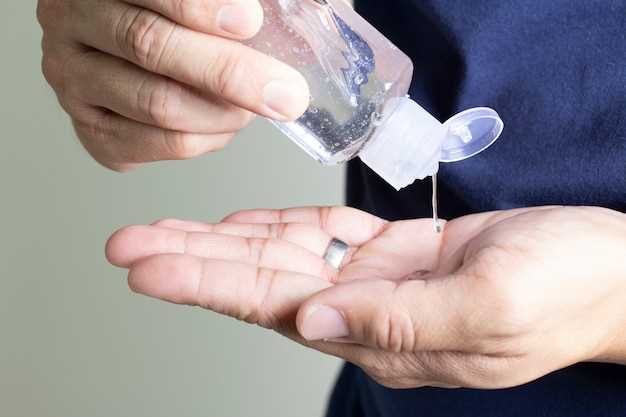
Wondering about the elimination time of metronidazole gel from your system? You’re not alone! Many individuals seek clarity on this topic to understand the effects of this medication. Stay informed and learn more about the process of metronidazole gel leaving your system.
Duration of Metronidazole Gel
Metronidazole gel is typically prescribed for a specific duration of time to treat various skin conditions such as rosacea, acne, or bacterial infections. The duration of treatment with metronidazole gel depends on the severity of the condition being treated and the individual’s response to the medication.
Short-Term Use
In some cases, metronidazole gel may be prescribed for short-term use, such as a few weeks, to address mild skin issues or as part of a combination therapy. Short-term use is common for managing acute flare-ups of rosacea or acne.
Long-Term Use
For chronic conditions like rosacea or acne that require ongoing management, metronidazole gel may be used long-term. The duration of long-term use can vary from several weeks to months or even years, depending on the individual’s needs and treatment goals.
It is important to follow the prescribed duration of metronidazole gel treatment as directed by your healthcare provider to achieve the best results and minimize the risk of side effects or antibiotic resistance.
Duration
Metronidazole gel is typically used for a specified period of time as prescribed by a healthcare provider. The duration of treatment with metronidazole gel can vary depending on the specific condition being treated. In most cases, the recommended duration of use is usually between 5 to 7 days. It is important to follow the prescribed duration of treatment to ensure the medication is effective and to minimize the risk of developing antibiotic resistance.
Factors
There are several factors that can influence the elimination of metronidazole gel from the body:
1. Metabolism: The speed at which your body breaks down metronidazole can affect how long it stays in your system. Individuals with faster metabolism may eliminate the drug more quickly.
2. Liver Function: The liver is responsible for metabolizing metronidazole. If the liver is not functioning properly, it may take longer for the drug to be eliminated.
3. Kidney Function: Metronidazole is excreted primarily through the kidneys. Impaired kidney function can slow down the elimination process.
4. Age: Older individuals may metabolize metronidazole more slowly compared to younger people, leading to a longer elimination time.
5. Hydration: Staying hydrated is essential for the proper functioning of the kidneys, which play a role in eliminating metronidazole.
6. Dose and Duration of Treatment: Higher doses or longer treatment durations can prolong the presence of metronidazole in the body.
7. Co-administration of other drugs: Some medications may interact with metronidazole and affect its metabolism and elimination.
Factors influencing the elimination of metronidazole gel
Metronidazole gel can be influenced by several factors that affect its elimination from the body. Understanding these factors can help you manage the medication effectively and minimize any potential side effects.
1. Dosage:
- The higher the dosage of metronidazole gel you use, the longer it may take to eliminate from your system.
2. Frequency of use:
- Using metronidazole gel more frequently than prescribed can increase the time it takes for the medication to be eliminated from your body.
3. Liver function:
- Individuals with liver problems may metabolize metronidazole gel at a slower rate, leading to a longer elimination time.
4. Kidney function:
- Impaired kidney function can affect the elimination of metronidazole gel, as the kidneys play a role in removing the medication from the body.
It is important to follow your healthcare provider’s instructions regarding the use of metronidazole gel and to discuss any concerns or questions you may have about its elimination from your system.
Side Effects
Metronidazole gel can cause various side effects, although not everyone will experience them. Common side effects may include:
Mild Side Effects
– Skin irritation or burning sensation at the application site
– Dryness or flaking of the skin
– Itching or redness
Serious Side Effects
If you experience any severe side effects while using metronidazole gel, such as severe skin reactions, allergic reactions, or worsening of your condition, seek medical attention immediately.
It’s important to discuss any concerns or potential side effects with your healthcare provider before using metronidazole gel.
Possible side effects of metronidazole gel
While metronidazole gel is generally well-tolerated, some people may experience certain side effects. It is important to be aware of these potential side effects and monitor your skin’s reaction when using the gel. Some possible side effects include:
- Skin irritation or redness at the application site
- Dryness or peeling of the skin
- Burning or stinging sensation
- Itching or rash
- Skin discoloration
If you experience any of these side effects, it is recommended to consult with your healthcare provider. They may provide guidance on how to manage these side effects or adjust your treatment plan if needed. It is also important to follow the prescribed dosage and application instructions to minimize the risk of side effects.
Recommendations
When using metronidazole gel, it is important to follow these recommendations to ensure its effectiveness and minimize side effects:
- Apply the gel as directed by your healthcare provider or pharmacist. Do not use more or less than recommended.
- Avoid getting the gel in your eyes, mouth, or nose. If accidental contact occurs, rinse thoroughly with water.
- Avoid using metronidazole gel on broken or irritated skin.
- Avoid exposure to sunlight or UV light while using metronidazole gel, as it may increase the risk of skin irritation.
- If you experience severe or persistent side effects, such as redness, itching, or rash, discontinue use and consult your healthcare provider.
Following these recommendations can help you get the most benefit from metronidazole gel while minimizing the risk of adverse effects.
Tips for managing side effects

Managing the side effects of metronidazole gel can help make your treatment more comfortable and effective. Here are some tips to help you minimize and cope with potential side effects:
1. Follow Your Doctor’s Instructions
It is important to follow your doctor’s instructions regarding the use of metronidazole gel. This includes the frequency of application and duration of treatment. Do not use more gel than prescribed or for longer than recommended.
2. Avoid Harsh Skincare Products
During the use of metronidazole gel, avoid using harsh skincare products such as exfoliants, scrubs, or products with high alcohol content. These can irritate the skin and worsen side effects.
3. Moisturize Regularly

Keeping your skin moisturized can help reduce dryness and peeling associated with metronidazole gel. Use a gentle, fragrance-free moisturizer to keep your skin hydrated.
4. Protect Your Skin from the Sun
Metronidazole gel can increase sensitivity to sunlight, so it is important to protect your skin by wearing sunscreen with a high SPF and avoiding prolonged sun exposure. Opt for hats, sunglasses, and protective clothing when outdoors.
By following these tips, you can help manage the side effects of metronidazole gel and support a successful treatment outcome.
